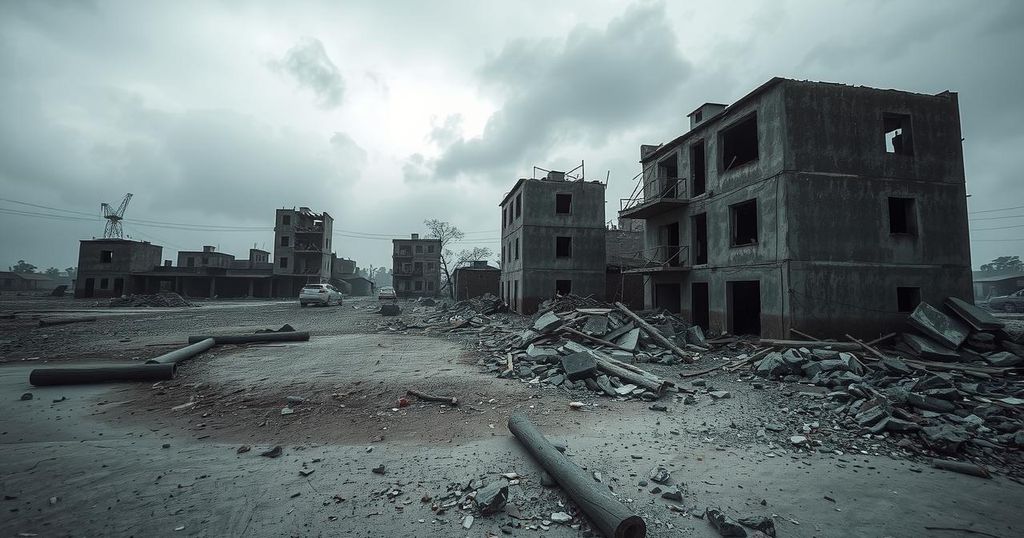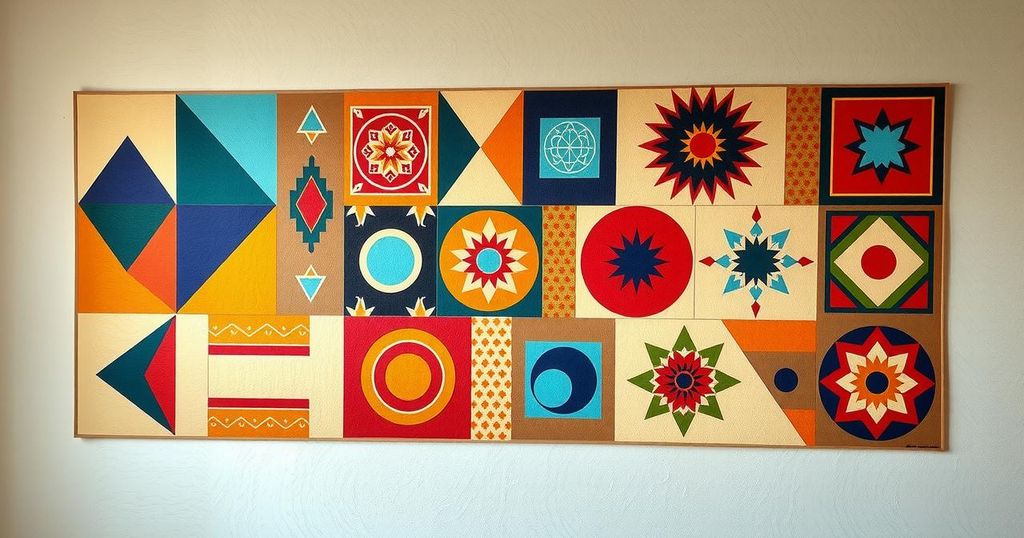Scars of War Remain Raw in Goma, DRC Following M23 Takeover
In Goma, DR Congo, following the M23 rebel group’s recent takeover, life remains severely disrupted, with violence and turmoil pervasive. Humanitarian crises have worsened, leading to mass displacements and economic collapse. The situation is dire, with hospitals overwhelmed and unexploded ordnance posing ongoing dangers. Diplomacy stumbles amidst escalating challenges, leaving the people in a constant struggle for peace.
GOMA, DR Congo, May 14 — The city of Goma, located in eastern Democratic Republic of the Congo (DRC), once thrived as a bustling crossroad. Now, however, it finds itself cloaked in a tense calm, following the recent advances of the March 23 Movement (M23) rebel group. The atmosphere is palpable, with daily life profoundly disrupted nearly three months after the rebels asserted control.
The takeover, which occurred on January 27, marked a significant chapter in a prolonged conflict that has afflicted eastern Congo for years. Residents, numbering over two million, are reminded of a bleak history; Goma briefly fell to M23 in 2012. The recent fighting wreaked havoc, as residential areas became battlegrounds, airports and border posts were engulfed in turmoil. Reports from the DRC government indicate over 8,500 lives lost and nearly 5,600 injured during late-stage assaults. Witnesses recounted horror stories of casualties even in displacement camps, noting deaths of pregnant women and newborns.
Despite a declared “humanitarian ceasefire” on February 4, violence has not abated. M23 has seized additional territory, including Bukavu, the capital of South Kivu, while establishing a strategic network throughout the region. Analysts express concern that this escalation hints at a more entrenched conflict. Corneille Nangaa, former electoral chief and current leader of M23’s political arm, has ominously promised to „liberate the entire country,“ a declaration that resonates deeply among the populace.
In the aftermath of Goma’s takeover, an eerie silence replaced the cacophony of gunfire. Yet, from that silence sprung disorder and authoritarian rule. Once-bustling marketplaces are now ghost towns, and the banking system has collapsed under economic pressures. Daily transactions have become nearly impossible due to cash shortages, prompting a surge in crime, especially during nighttime. Meanwhile, M23 has established checkpoints, demanding taxes and tolls in lieu of absent government authority.
On a humanitarian front, the consequences have been dire. The International Organization for Migration reports over 1.2 million newly displaced individuals in the Kivu provinces since January. Many who initially sought refuge in Goma now face repeat dislocations, forced to evacuate once again amidst chaos. The M23’s February ultimatum demanded an abrupt evacuation of all major displacement camps, further complicating an already desperate situation. Families fled with little more than what they could carry, often finding their homes reduced to rubble, land scorched, and roads impassable upon return.
West of Goma, the town of Sake has emerged as another focal point of conflict. Fierce territorial battles have raged here since late 2023. Street fighting has left Sake in tatters, and danger continues to lurk, with unexploded ordnance littering nearby fields. Local resident Christian Kabuya noted, „We have found live shells in over ten locations. Several people, including children, have died from accidental explosions.”
The humanitarian situation worsens at Ndosho Hospital, the lone facility still treating wounded patients in Goma. It is reeling under an influx of casualties, popping at the seams with pressure, bolstered by the International Committee of the Red Cross (ICRC). Taoffic Mohamed Toure, an experienced ICRC veteran, described the complexities of the crisis: “The sheer number of actors and the recurring violence make eastern Congo one of the most challenging places we operate.”
As diplomatic negotiations flounder and ceasefires collapse, the citizens of eastern DRC remain entrenched in a landscape shaped by conflict. In Goma, where the remnants of Nyiragongo’s lava meet the scars of war, the legacy of strife remains painfully clear, with no end in sight.
In conclusion, Goma embodies the ongoing struggles faced by the people of eastern DRC, marked by recent M23 advancements and persistent violence. The humanitarian crisis, highlighted by mass displacements and economic deterioration, reflects a dire reality that complicates daily life. As the region battles for stability, the scars of war linger, offering a haunting reminder of the conflict’s deep-rooted impact.
Original Source: english.news.cn




Post Comment